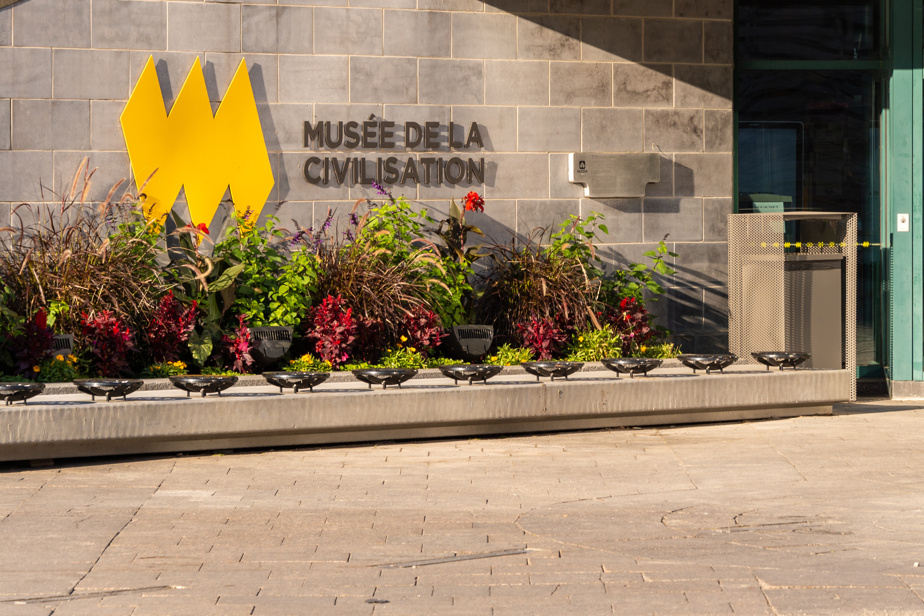Climate change and its consequences for the future of the planet are a source of anxiety for many, but they can also inspire others to create. Betting on the beauty of the world, this is the objective of the international exhibition For tomorrowdesigned by the Barbican center in London and co-produced by the Musée de la civilization de Québec, which will host it from Wednesday until January 7, 2024.
“This is an exhibition born in the spirit of the team at the Barbican in London, a multidisciplinary arts centre, explains Anouk Gingras, project manager at the Musée de la civilisation. They wanted to create an exhibition on climate change, but from a positive angle. They therefore asked different artists to think about a better future, around the year 2040, which would put in place solutions to climate change. »
To these digital works of art that arrived from the United Kingdom after being exhibited for several months at the Barbican, the Musée de la civilization has added a section on Quebec issues related to the climate crisis.
The proposed route is divided into five themes, namely the protection of biodiversity, agriculture and food, consumption, construction and transport, mobility and energy. There will be more than 120 objects related to local, creative and concrete solutions to remedy various problems caused by climate change.
“Each object bears witness to a solution,” explains Lydia Bouchard, the museum’s curator. For example, in the section on consumption, the main message is to say that we must reduce our overall consumption, whether by reusing, repairing or recycling. We present concrete examples such as the company Paverco, of Shawinigan, which manufactures paving slabs from recycled material. Each square foot is made with 25 wine bottles and over 500 plastic bags. »
We will thus recognize local projects and initiatives already underway, including the use of milkweed, the electric battery sector, ecological buildings, a pot of sauce made from imperfect vegetables, a pass for public transport and so on.
Encourage change
The exhibition will be dotted with proposals for benevolent actions to take to bring about a positive change in the face of the situation. The whole thing is not intended to be alarmist, but rather to bring hope and positivism, argues Anouk Gingras
“We take people where they are in their approach,” says the project manager. We designed an interactive game for visitors, which allows them to determine their green profile. Through the exhibition hall, they are led to answer questions about stations made from old vending machines. At the very end of the tour, the visitor is revealed their green profile, their strengths and those they need to work on, with appropriate solutions. It’s without making people feel guilty, but rather showing them possibilities that are within their reach. »
At the heart of the exhibition, there will also be a local Aboriginal work by Mohawk artist Skawennati. Title The Three Sisters: Reclaiming Abundance, the work recalls the mode of consumption of the First Nations, who have always taken only what they needed so that future generations would never lack for anything. The famous three sisters are the crops of corn, squash and beans, embodied by the artist as superheroes of agriculture.
Mushroomed walls
In line with the subject of the exhibition, it was designed with recycled or used materials. In addition, the original furniture from the Barbican was borrowed so as not to make new platforms for the works.
The walls are made of recycled material and mycelium, mushroom roots.
“The mycelium separates the works and acts as a sound barrier,” says Ms.me Bouchard. This one was grown and nurtured from residues like sawdust and coffee grounds. So these are walls of recovered waste. »
The creators of For tomorrowFrench and improved version of its English counterpart Our Time on Earthhope that visiting the exhibition will allow the public to reflect on climate change by putting aside, for a moment, their eco-anxiety.
“The positive side that we wanted to give to the exhibition means that we come out of it with a lighter heart, notes Mme Gingras. We focus on what is possible to do, both individually and collectively, and that feels good. »
“I think we came out of there a little reassured to see that there are so many people everywhere in Quebec and around the world who are looking for solutions, who are developing, that these solutions exist, that it is up to us to deploy them,” added Lydia Bouchard.
This dispatch was produced with financial assistance from the Meta Exchange and The Canadian Press for News.
